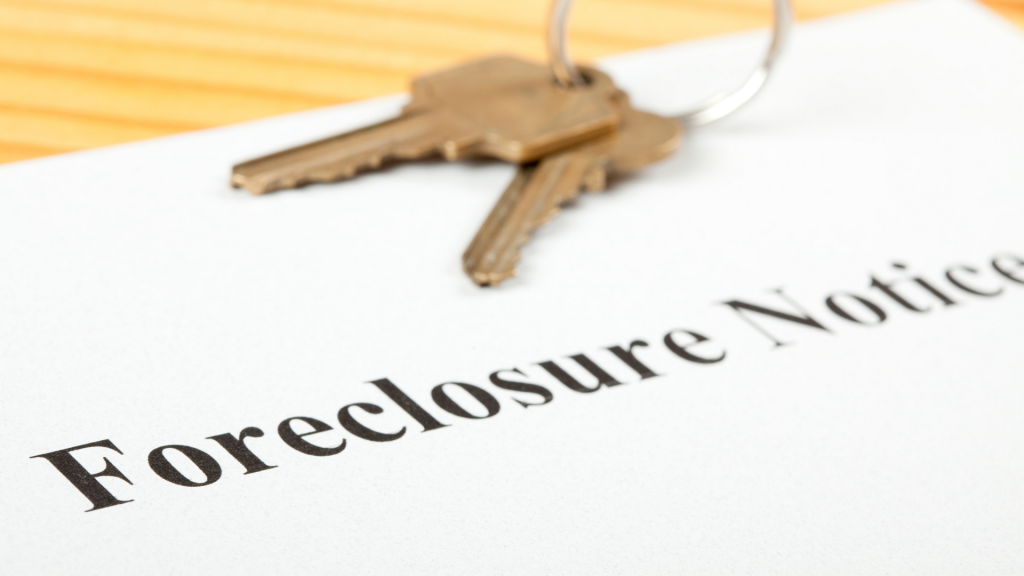Foreclosure is a legal process that has come to be used as a way to force homeowners to move, to recover debts or loan amounts owed by the homeowner. This can be a distressing experience for many, especially if they are not prepared to move. Foreclosure happens when there are no suitable properties to buy that are affordable, and the bank has foreclosed the home.
It is the legal process used to put a person in control of a home and collect unpaid real estate taxes and back mortgage payments. There are many ways that a person can get into foreclosure. Lenders may be concerned that the home is worth less than they have loaned on the property. This is why it is crucial to make proper research on the property one buys. And quite fortunately there happen to be experienced persons in this field, potentially similar to Michael Teys, who can do the research on behalf of the buyers, to help them avoid any pitfalls.
What happens to a property that is for a foreclosure?
The term “foreclosure” is used by banks and lenders to describe their process of evicting the mortgage holder (or the servicer) of a defaulted mortgage loan. Once the mortgage holder is evicted (sometimes called a “deficiency judgment”), the bank or lender can sell the property at a public auction, though it is more common for the bank or lender to simply shovel the mortgage and related paperwork into a garbage truck and wait for the property to be sold at a public auction.
Stages of Foreclosure
- Default Payment
The default payment for a mortgage is known as “interest only” or “amortization”, and it means you are still making payments because you are still paying for the house, but only the interest portion of the loan. You are still responsible for everything from the very beginning, but the lender cannot take any money from your profits. In the beginning, you pay a small amount of interest, usually around 2% to 5% per year. After a while, you have no interest on your loan at all, which means you are still paying the loan itself. You need to make these payments forever, which is why you call it “foreclosure”.
- Default Notice
The process of foreclosure is a complicated one. It begins with a default notice, which is a letter that is sent to the mortgage holder of the property, informing them that the mortgage is in default and giving them 30 days to contact the bank and begin the foreclosure process. If this doesn’t go through, the bank can go to court and begin the process of foreclosing. In some cases, it may just happen that bad creditors send a false notice by tampering with a homeowner’s credit reports and falsifying defaulted payments. Often, taking the help of an expert credit report lawyer in Denver (or another location) could be helpful in navigating the legalities of such situations, and result in a favorable outcome.
- Trustee’s Sale Notice
The first step in this process is filing a Notice of Trustee Sale. This is a document that is filed in the local court in the county where the property is located, listing the property’s owner, the amount owed, and a deadline for the defaulting party to either cure the default or have the property sold at the trustee’s discretion.
- Sale of Trustees
The sale of trustees for a property asset is an important event in a property’s life. The trustees are responsible for managing the property, selling it at a profit, and managing the money (a.k.a. “banking”) that is left over when the property is sold. In this case, the trustees will receive a 10% commission on the sale proceeds. During this process, the homeowner may be able to get in touch with companies like Crawford Home Buyers to sell the house for cash. They can help the owner prevent foreclosure by buying the home quickly.
- Real Estate Owned (REO)
When a bank forecloses on a house, it typically takes about a month before the bank will attempt to sell the home. This gives the bank time to do a few things. They will contact the owner of the house and ask them to pay a certain amount of money to avoid foreclosure. If they refuse, they will have to pay back the amount of money that they have already paid with penalties and interest on top of it. Once this happens, they will start the foreclosure process, which will entail contacting the sheriff to have the house seized.
- Eviction
It’s not uncommon for homeowners to have to move out of their homes when they fall behind on their mortgage payments. In such situations, people usually tend to look for a new living space where they can relocate. Once that is done, they may hire moving companies similar to round rock movers or the ones like them in their area, who can help the family relocate with their belongings to the new house. However, when the home is lost to foreclosure, the process can be more complicated than just packing up the family and leaving the house.
When you go into foreclosure, you lose your home, and it’s not long before life as you know it ends. Once you lose the home, it’s hard to get it back, but there are things you can do to improve your chances of getting it back. If you can manage your mortgage payments on time, then there is nothing for you to worry about. But, if you think you will not be able to pay your installments, then speak to the bank or your lender and see what can be done about it. Do this before you get a notice for foreclosure!

